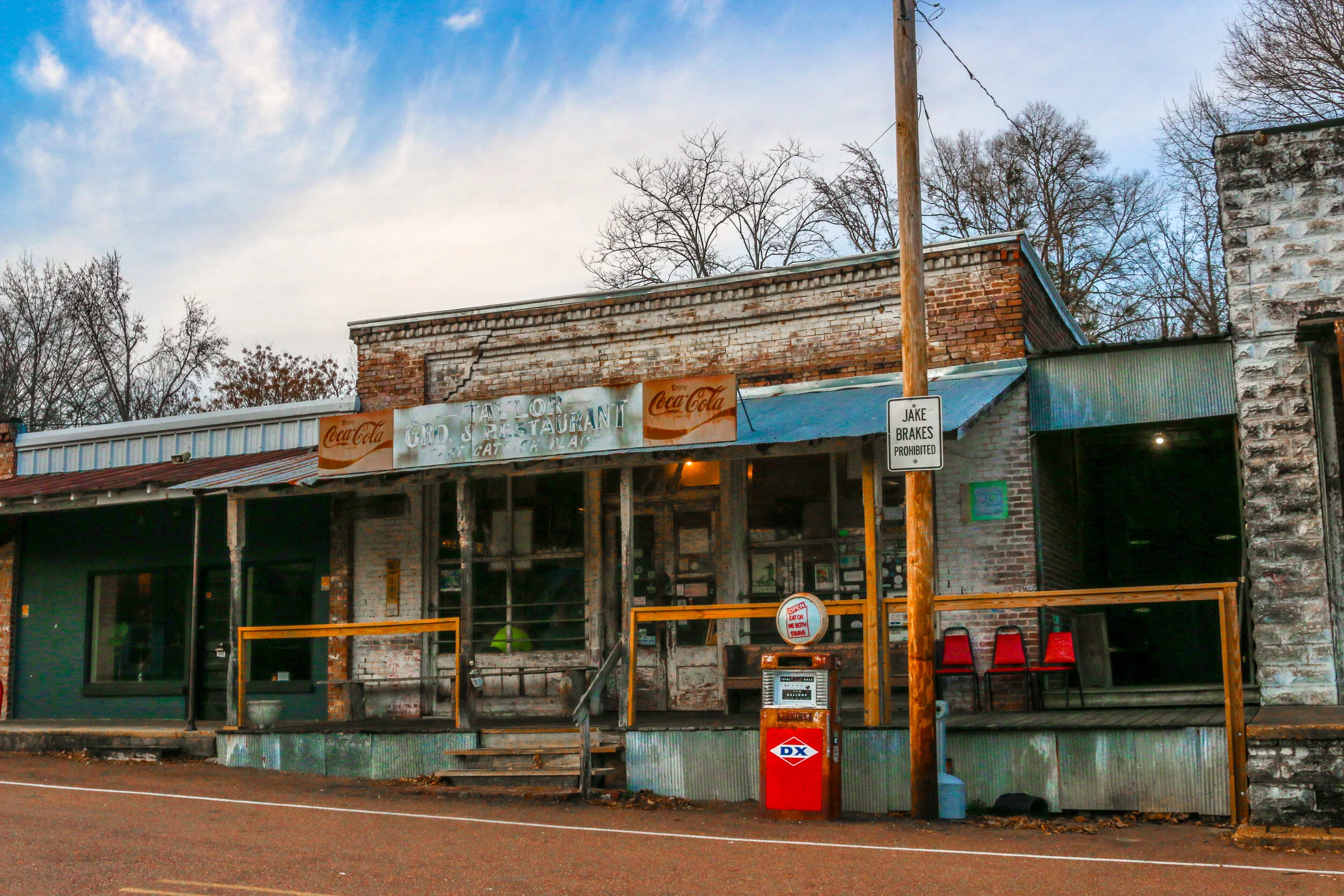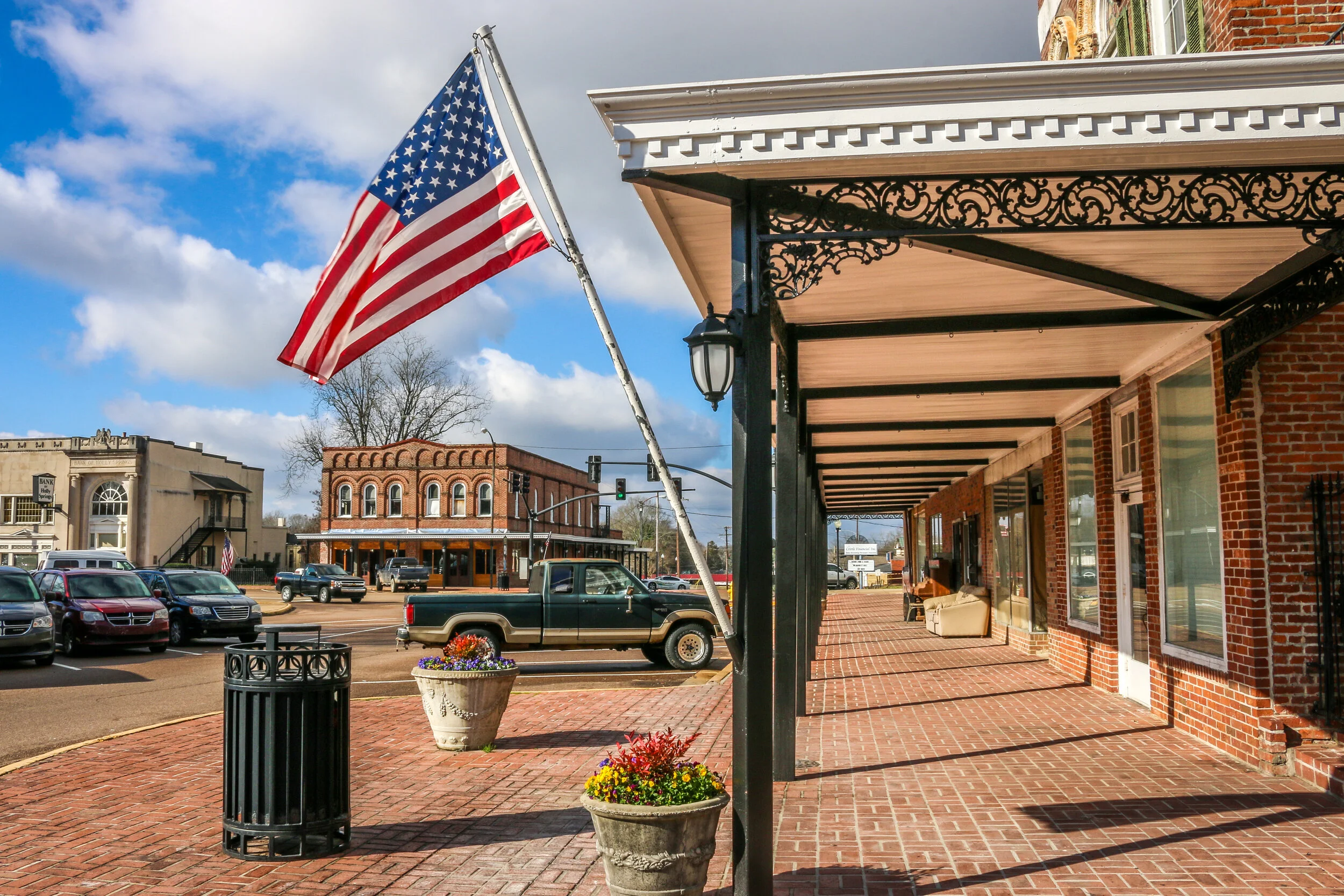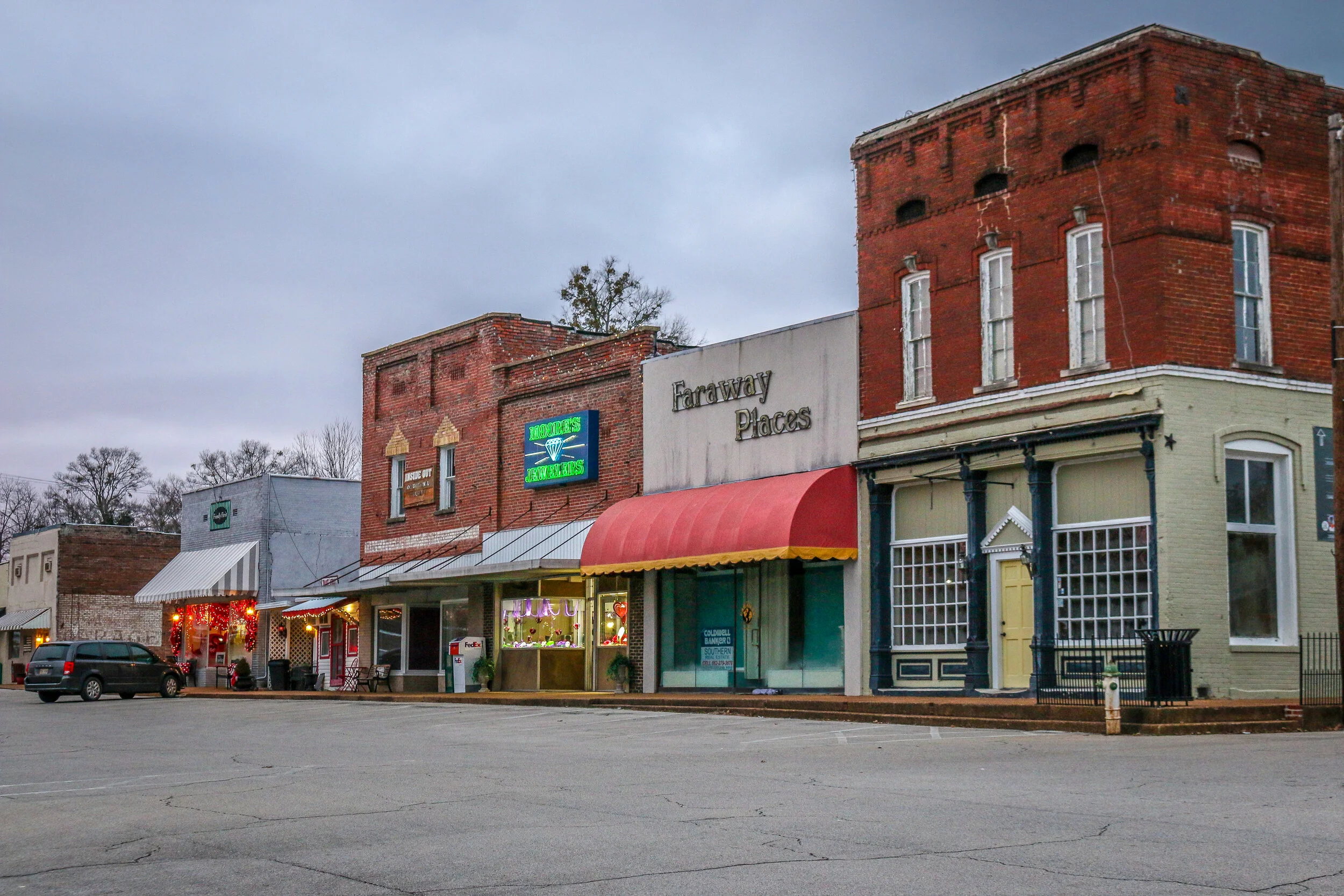Give me an out-of-the-way place with history, visual appeal and live music and I’m a happy man. Throw in good company and great food and I could be there for awhile. Such was the case on my recent visit to historic Taylor Grocery in tiny Taylor, Mississippi, which is only about 20 minutes from The Square in downtown Oxford, but feels a world away.
During my stay in Oxford, I spent time with several different friends from several very different tperiods in my life, and every single one of them told me I had to visit Taylor Grocery before I left. My friend Luke Fisher happened to be playing a show there the Saturday night I was in town, so that pretty much sealed the deal on my visit. And so it was that I set out down the Old Taylor Road to see what all the fuss was about.
West Point, Mississippi is a pleasant, medium sized town in Clay County in the east-central part of the state. Perhaps best known as the hometown of legendary bluesman Chester “Howlin’ Wolf” Burnett, I found it to be a wonderful place to spend an afternoon. There are some beautiful old buildings, some delightful parks and some wonderful murals and artwork, all packed into a compact and walkable downtown area. Originally home to Choctaw and Chickasaw Indians, the French, Spanish and British also vied for control of the region. The town itself was originally laid out as a railroad town when the Mobile and Ohio Line came through in 1858. It would grow as part of the state’s Black Belt as cotton production became Alabama’s main industry. While I couldn’t find the origin of the name West Point (interesting to me because it’s in the east of the state), Clay County was named for the Great Compromiser, Kentucky’s Henry Clay. Because of the railroad, West Point was a strategic target during the Civil War, although the only real skirmish was a small one and occurred in 1864. November 2nd, 1909 was an exciting day in town when President William Howard Taft’s train pulled into the station and he addressed the townspeople from his rail car before heading on to Columbus.
When I visited West Point, I sadly found the Howlin’ Wolf Museum closed. While I waited for a call back from the man who runs it, I grabbed my camera and went for a wander. While I was there, the clouds cleared and I found a wonderful, clean, well-kept downtown with a distinctly small-town feel to it. I loved the City Hall building, City Park, the town’s stoic churches, the old Ritz Theater, some beautiful art projects scattered around town and some really cute small businesses on Main and Commerce Streets. While I never did get into the museum (they’re building a new one in a vacant storefront on Commerce Street), I’m still glad I stopped. There wasn’t much going on when I was there, and I was okay with that. A beautiful town on a sunny day is always something to write home about. Thanks for a wonderful visit, West Point; I hope to be back when the new museum is open for business.
Water Valley is an endearing small town of about 3400 people in Yalobusha County in North-Central Mississippi. Settlers began moving to the area after the treaties of Dancing Rabbit Creek and Pontotoc which would push the native Choctaw and Chickasaw people out of the area. Cotton plantations began to spring up in the region with most of the cotton traveling to market along the Yalobusha and Yocona Rivers. Then the Mississippi Central Railroad came to town in 1860 and Water Valley became a bit of a boom town. Beautiful Victorian homes were built and downtown was thriving. The Civil War came to Water Valley in 1862 when Union forces occupied the town. After the war, Water Valley would thrive again, but when rail traffic was diverted elsewhere the town would begin a long slow decline. Some time around 2008, Water Valley underwent a renaissance as people began to discover a beautiful town with cheap real estate and empty storefronts. Today, Water Valley is starting to come into its own yet again. If it weren’t in the heart of Central Mississippi, I might even call it “hip”. It’s still quiet and a little sleepy, but you can feel renewal in the air. As I walked around, I saw a lot of people working in the empty buildings and turning them into something fresh and new. Meanwhile, Turnage Drugstore which has been in operation since 1905, is still at the heart of the community and remains a great place to visit, grab an ice cream and catch up on the gossip (and get your prescriptions filled too, I assume). I really enjoyed this delightful little town…
Holly Springs was founded in 1836 on land previously occupied by the Chickasaw people after the Treaty of Pototoc Crreek forced them west. New settlers came to the region quickly and scrambled to buy up land and start planting cotton. As the county seat, Holly Springs grew rapidly as well and even more-so when the Mississippi Central Railroad came through in 1855. During the Civil War, the strategic nature of the railroad came into play and Holly Springs was occupied by Ulysses S. Grant and his Army of the Tennessee. Confederate Cavalry Commander Earl Van Dorn rode into Holly Springs before dawn on December 20th, 1862. The surprise attack temporarily cut off the Union supply route as Van Dorn’s men took all the supplies they could carry and burned the rest. After the war, Holly Springs would resume its role as a cotton center and railroad hub. Rust College was established in Holly Springs in 1866 to help educated newly freed slaves in the area. The college is still in operation today, making it one of the oldest Historically Black Colleges and Universities in the South.
Holly Springs today is a pleasant town of about 7500. I was thrilled to see construction going on while I was there and to find a Mississippi town which is growing and improving instead of deteriorating. There are a number of wonderful Antebellum homes to see in town, and the bustling town square has several restaurants and coffee shops when you get hungry. When I was there, I stopped in to the Visitors Center and spoke with Jamie who was super helpful in pointing out all the wonderful things Holly Springs has to offer. It should definitely be your first stop when you go to visit. I had a great day in Holly Springs and loved taking the photos you’ll see in this post. It’s a town on the rise, and I look forward to seeing how far it’s gotten the next time I’m in town.
The tiny town of Iuka, Mississippi (population 3,000) was founded by David Hubbard in 1857 along the route of the Memphis and Charleston Railroad. Built on the sight of an old Chickasaw Indian village, the town takes its name from one of the chiefs of that village, Chief Ish-ta-ki-yu-ka-tubbe . Iuka (pronounced “aye-you-ka”) was the site of the Battle of Iuka during the Civil War, an engagement between Union General Rosecrans’ Army of the Mississippi and Confederate General Sterling Price’s Confederate Army of the West. The battle resulted in over 2300 casualties before Price withdrew his troops and marched on to join General Van Dorn in the 2nd Battle of Corinth. The Brinkley House, also called Dunrobin, was used as General Grant’s Headquarters during the battle, and is a really cool antebellum home.
Today, Iuka is a charming little town with a cute downtown area and a wonderful park. The park’s centerpiece is the Iuka Mineral Springs, where natural spring water flows for all to enjoy. I really liked this park for some reason and enjoyed taking photos of the old playground equipment which reminded me of the things I played on when I was a kid. Iuka has a beautiful War Memorial and a history museum in their old courthouse which was sadly closed during my visit. There were also several beautiful churches and some neat looking shops. Much like my visit to Corinth, short days and cold weather kept me from exploring too far afield, but I thought Iuka was an adorable little town and that these photos would give you a feel for my visit.






